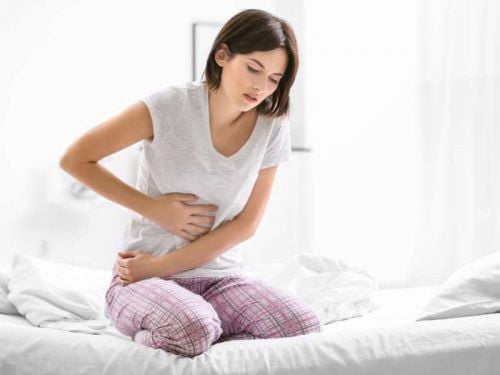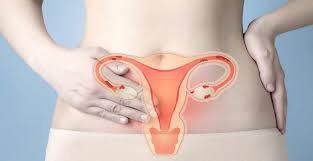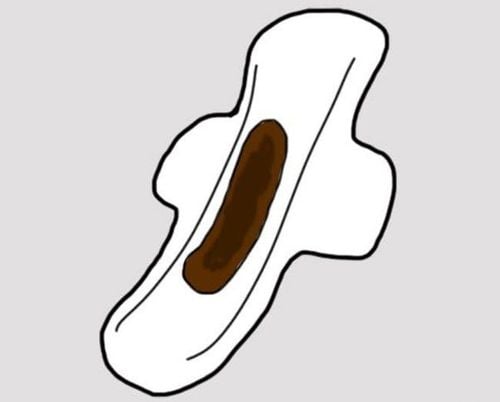This is an automatically translated article.
Endometriosis is an abnormality of the uterine lining being misplaced. Although not life-threatening, it can cause a number of complications that affect a woman's quality of life and fertility.
1. What is endometriosis? The inside of the uterus is covered with a layer of mucosa, which is also called the endometrium. The endometrium has the property of growing and proliferating under the influence of hormones and contributes to the menstrual cycle.
For normal people, this endometrial layer is only located inside the uterus, but for some people, this lining can exist in many different locations such as in the abdomen, ovaries, posterior mucosa. endometriosis, in another organ or within the uterine muscle itself, is called endometriosis.
Endometriosis, also known as myometrial gland disease, is the presence of glands, like the lining of the uterus, in the muscle of the uterus. These tissues tend to spread, causing the uterus to dilate, and people with this condition may have a normal but double or triple uterus. These endometrial-like glands and tissues have similar properties to the lining of the uterus, and they also proliferate and shed under the influence of hormones.
It has been found that the finding of endometriosis in the myometrium is often found along with a number of other pelvic abnormalities.
2. Causes of Endometriosis In fact, the exact cause of this disease is still unknown. Researchers think that the occurrence of endometriosis may be related to a number of factors including:
Blocked menstrual flow causing stasis or retrograde: Menstrual tissue stagnates and flows backward through the ducts eggs, deposited on pelvic organs, then multiply and grow causing endometriosis. Genetic factors: This disease often has genetic factors, so people who have sisters, aunts, uncles and biological mothers with the disease are also at higher risk. Surgery: Endometriosis is associated with a number of pelvic procedures, especially cesarean sections, but multiple births also have a higher risk. Hormones: Elevated levels of the hormone estrogen in the body can also be thought to be a factor in causing endometriosis. Age: Although it can occur at most menstruating ages. But the most common are women between the ages of 30 and 40.

Lạc nội mạc trong cơ tử cung là một bất thường của vị trí niêm mạc tử cung bị sai chỗ
3. Signs to recognize endometriosis in the uterus It is found that nearly 1⁄3 of the patients have no typical signs or symptoms only mild discomfort. Therefore, this disease is often difficult to detect, difficult to diagnose and only discovered by chance. However, in others, the disease can cause obvious symptoms such as:
Heavy menstrual bleeding (hypermenorrhoea) or prolonged (menorrhagia). Bleeding clots during menstruation Severe abdominal cramps or sharp pain in the pelvic area during menstruation. This pain sign is quite difficult to distinguish because many people have dysmenorrhea as well as a physiological sign. However, it is possible that the difference is that you do not experience severe pain before, but naturally feel more pain after the age of 25. This could be due to endometriosis or an abnormality in the pelvic area. . Chronic pelvic pain unrelated to menstrual cycle. Abdominal pain during intercourse.
4. How to diagnose endometriosis in the uterus Because many manifestations are not clear and can be confused with many other diseases such as uterine fibroids, endometrial polyps... Therefore Patients are often discovered incidentally when examining the pelvic region. In addition to seeing suggestive clinical manifestations such as abnormal abdominal pain, menstrual changes, increase in uterine size, etc., in order to make an accurate diagnosis, it is necessary to perform paraclinical measures such as:
Transvaginal Ultrasound: This is a simple, inexpensive method that can diagnose endometriosis or some other abnormality of the uterus. On ultrasound, people notice symptoms include: Seeing a changeable mass inside the uterus, the size can vary from a few millimeters. However, whether ultrasound can detect endometriosis tissue in the myometrium is very dependent on the skill of the doctor and the quality of the images. Sometimes, it can also be difficult to distinguish from other damaged tissue. Magnetic resonance imaging: This is a method that allows a definitive diagnosis in suspected cases of ultrasound. Sometimes in some cases tissue and biopsy are needed to rule out endometrial cancer); however its accuracy can be limited, mainly due to sampling error.

Đau quặn bụng nhiều trong thời kỳ kinh nguyệt là dấu hiệu nhận biết lạc nội mạc trong cơ tử cung
5. Is endometriosis dangerous? There is currently no clear evidence that endometriosis affects the risk of infertility , miscarriage or preterm birth .
However, it can cause some symptoms that cause anxiety and affect the patient's quality of life. It can cause a number of things that affect a person's life including:
Excessive menstrual bleeding, which can lead to iron-deficiency anemia. Causes menstrual cramps that affect the patient's daily activities and work during the menstrual period. Chronic pelvic pain: Constantly feeling pain in the pelvic area, pain affects the patient's life and quality of life. Accompanied by other forms of endometriosis may be associated with complications of endometriosis in those areas. In general, endometriosis is not life-threatening. But in some cases, it causes complications and affects the quality of life of the sufferer.
6. Treatment of endometriosis in the uterus If endometriosis in the uterus does not cause complications affecting health, usually only symptomatic care and treatment is needed. Because it usually goes away after menopause. Some of the treatment options that may be selected for treatment depend on the individual patient's condition. These include:
6.1. Medical treatment Anti-inflammatory drugs: Medications such as anti-inflammatory to help control pain. Treatment is by starting anti-inflammatory drugs about one to two days before the start of the menstrual cycle and needing to take them until the menstrual period stops, to reduce menstrual blood flow, thereby reducing pain, reducing blood volume. blood loss due to menstruation. Hormonal medications: Like birth control pills or patches, vaginal rings containing hormonal drugs or amenorrhea can help relieve pain. 6.2. Surgery To definitively treat endometriosis in the uterus, it is necessary to remove the uterus. This method is indicated if the patient has a lot of pain and drug treatment is not effective.
6.3. Procedure Today, thanks to medical advances to avoid the need for hysterectomy, there is also a method of uterine embolization. This method is used for the purpose of clogging the blood vessels that nourish the diseased area, reducing the symptoms of the disease.
6.4. Care measures In addition to examination and treatment according to the doctor's instructions, to reduce symptoms, especially during menstruation, you can try measures such as:
Soak the body in a warm bath. Apply heat on the abdomen with a heat pack or herbal remedy. Endometriosis can occur in women of menstruating age with a high rate. But the detection is not easy at all, often discovered by chance during examination. If there are abnormal signs related to menstruation, you need to visit a doctor to find the cause and appropriate treatment.
Please dial HOTLINE for more information or register for an appointment HERE. Download MyVinmec app to make appointments faster and to manage your bookings easily.













